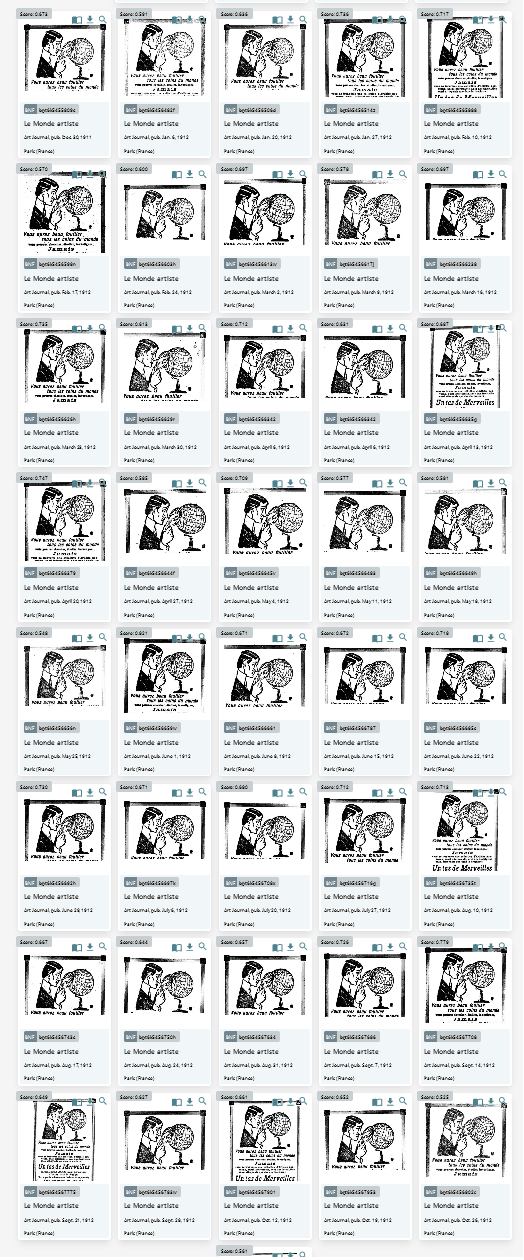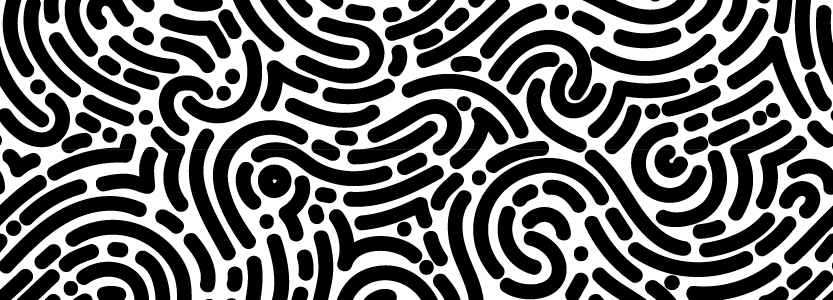"You may search all the corners of the world..."
Béatrice Joyeux-Prunel
When the machine laughs at us
This image appeared one day - during a long, painful observation, cluster after cluster, of what the machine could bring back from its grouping of similar images.

The illustration, and the accompanying caption, appeared to us as a stream,- in a huge, repetitive cluster, too abundant to go unnoticed.


"You may search every corner of the world... You will be able to search, to study, to investigate, Never... "
For a team of historians working on globalization, coming across such a message is as funny as it is painful.
Leaning on his globe with his magnifying glass, this character is a bit like us. If he seems to be looking everywhere, observing his globe and observing it again, the message that comments on his representation is nevertheless quite clear: "You will never find...".
Now, for months, we have been spending a lot of energy to interpret, group, study, re-interrogate, understand, complete, analyze the results brought by the algorithms that analyze our corpus. Not only do we regularly unpack thousands of image clusters, which the machine spits out one after the other, without any other logic than the number of countries and cities in which they were published. But still, everything remains to be done.
Once the interesting clusters are gathered, how to analyze them? Are they relevant? This needs to be verified. What can the circulation of the images they present mean? And what circulates when this image circulates?
An idea? A behavior? A taste? What has triggered the circulation of this image - if it can be a homogeneous phenomenon?
Permanent doubt.
Some images are advertising. Some illustrate current events. Others pass from one type to another, without the machine allowing us to see it immediately. For art images, for example, some circulate first to illustrate exhibition reports; then to illustrate artists' monographs; then to illustrate advertisments paid for by art dealers. In short, we must "search, study, investigate"...
The already heavy work of algorithmic analysis quickly calls for another, equally heavy one: to observe the images in context, to open the pages of the magazines, to inform ourselves about these magazines, about the passages illustrated by our images; then another one still: to dig further, from other sources (archives, correspondences, printed sources), to understand the phenomenon which led for one particular image to be made, then printed, then reprinted, again and again.
"You will never find...".
So yes, this message first fell on us like a tile. Funny how the segmentation algorithm cut this ad off at this point, especially because the ad is longer; the text more wordy - and more explicit.
This insert is in fact an advertisement for Etablissements Moderna, 10 rue Danton in Levallois-Perret, specializing in furniture and interior design. A bazaar.
But if the meaning of this image is eventually clear, it is like a challenge created by the machine.
Is it a joke that the machine would throw to us? A sign of fate? A chance of life and research? The little mocking joke of an artificial intelligence that is more intelligent than we might think?
Historians (at least our team) do not believe in the intelligence of algorithms. What we retain from this image is first of all that we interpret things - and images and texts with them - according to our expectations, our frustrations, our needs.
In this case, the machine is not so much a challenge as an incentive to be wary of one's own interpretations.
Another certainty: the work will never be finished. After the first surprise, followed by a fit of laughter, the image is sent to the whole team, studied, smiled upon, and then back to work. It's clear: we'll never get there - but it's a stinger to look for more.
Chapter :
V. The Machine's Hoaxes
Go back :
Can we share jokes between nations ?
Next Cahpter :
Episode VI. A short history of visual epidemiology

